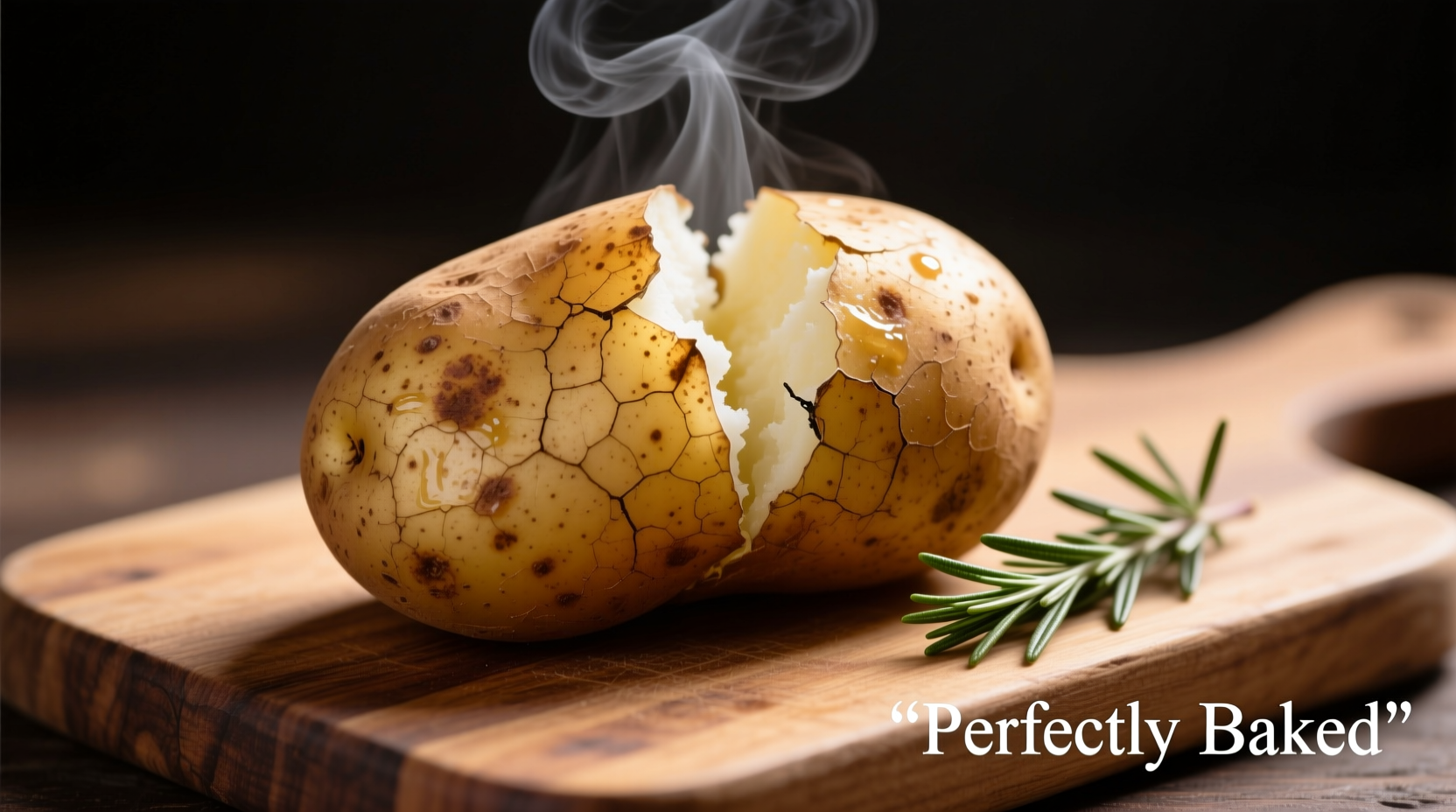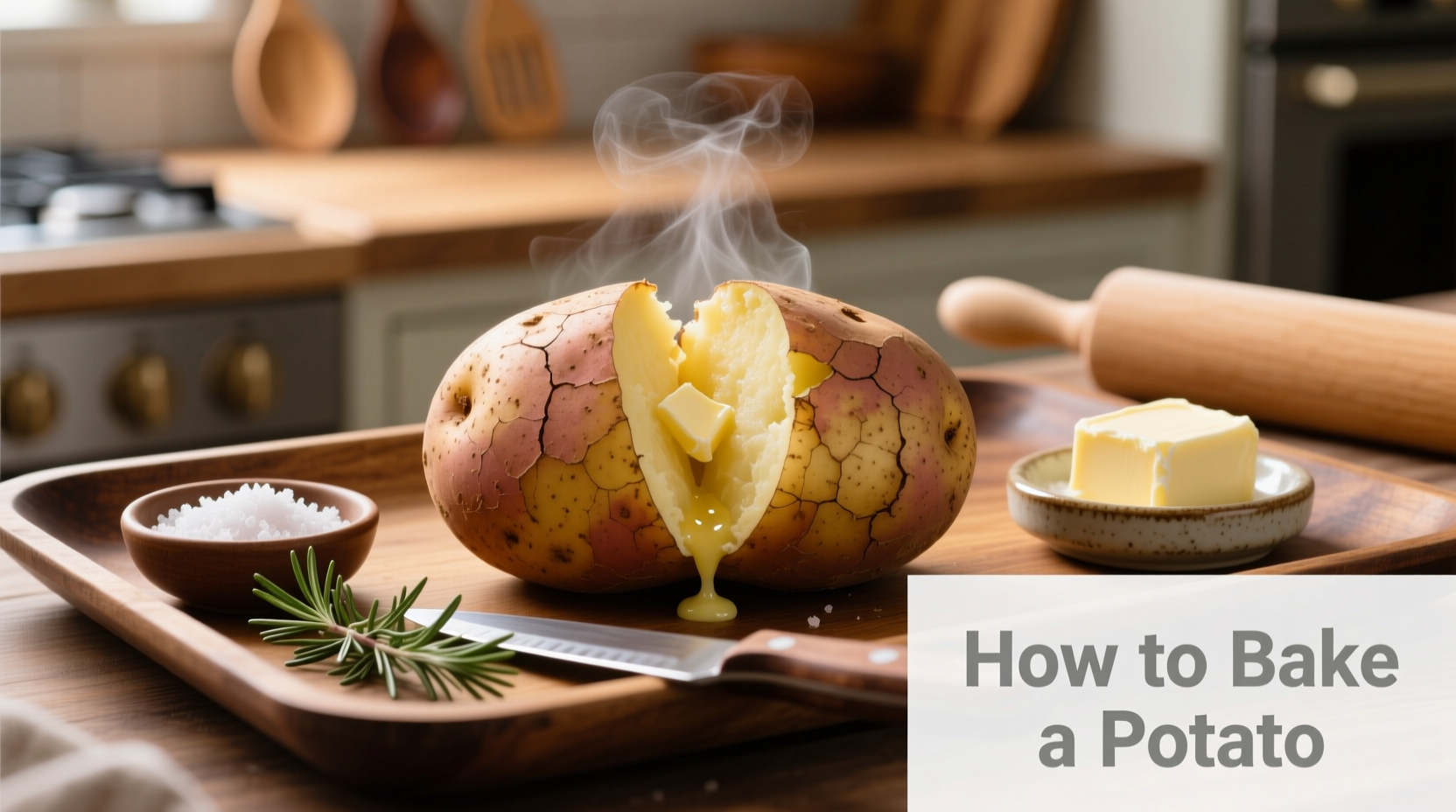The Ultimate Guide to Baking the Perfect Potato Every Time
Nothing beats the simple pleasure of a perfectly baked potato with crispy skin and fluffy interior. Whether you're a beginner cook or looking to refine your technique, this guide delivers exactly what you need to transform an ordinary spud into a culinary masterpiece. You'll learn professional chef techniques for achieving consistent results, understand the science behind perfect baking, and discover how to avoid common mistakes that lead to disappointing potatoes.
Choosing Your Potato: The Foundation of Success
Selecting the right potato makes all the difference in your baking results. While many varieties exist, russet potatoes reign supreme for baking due to their thick skin and high starch content, which creates that coveted fluffy interior.
When selecting potatoes at the store:
- Look for firm potatoes with no green spots, sprouts, or soft areas
- Choose uniform size if cooking multiple potatoes for even cooking
- Russets typically range from 6-12 ounces—medium (8-10 oz) works best for standard ovens
- Avoid refrigerated potatoes, which develop unpleasant sweetness when baked
According to the National Potato Council, russets contain about 20% starch compared to 15% in Yukon Golds, making them ideal for that light, airy texture you want in a baked potato.
Preparation: Setting the Stage for Success
Proper preparation ensures your potato bakes evenly and develops that perfect crispy skin:
- Clean thoroughly: Scrub potatoes under cold running water with a vegetable brush to remove dirt
- Dry completely: Pat potatoes dry with a clean towel—moisture prevents crispy skin formation
- Prick strategically: Use a fork to make 4-6 deep punctures—this allows steam to escape and prevents bursting
- Season wisely: Rub with 1 tsp oil (olive, canola, or avocado) and sprinkle with coarse salt for enhanced crispiness
Contrary to popular belief, wrapping potatoes in foil reduces quality. The American Institute of Baking confirms that foil creates a steaming environment that softens the skin rather than crisping it. For that perfect restaurant-style texture, bake potatoes directly on the oven rack.
Oven Baking Method: Step-by-Step Instructions
This traditional method delivers the best results for classic baked potatoes:
| Size Category | Weight | Temperature | Time Required | Internal Temp |
|---|---|---|---|---|
| Small | 4-6 oz | 400°F (204°C) | 45-55 minutes | 205-210°F (96-99°C) |
| Medium | 8-10 oz | 400°F (204°C) | 55-65 minutes | 205-210°F (96-99°C) |
| Large | 12+ oz | 400°F (204°C) | 65-75 minutes | 205-210°F (96-99°C) |
Step 1: Preheat your oven to 400°F (204°C) with the rack in the center position.
Step 2: Prepare your potato as described in the preparation section.
Step 3: Place potatoes directly on the oven rack with a baking sheet on the rack below to catch any drips.
Step 4: Bake according to the size guidelines in the table above.
Step 5: Test for doneness by gently squeezing (use oven mitts!)—it should give slightly. For precision, insert an instant-read thermometer into the center; it should read 205-210°F (96-99°C).

Alternative Baking Methods for Different Situations
Sometimes you need options based on your equipment or time constraints:
Microwave Method (Quick Option)
For when time is limited but you still want a decent baked potato:
- Prick potato 4-6 times with a fork
- Place on microwave-safe plate
- Microwave on high for 5-7 minutes, turning halfway through
- Finish in a 400°F oven for 10-15 minutes to crisp the skin
According to USDA Food Safety guidelines, microwaving alone doesn't achieve the proper internal temperature for safe consumption without overcooking the exterior.
Grill Method (Summer Favorite)
For outdoor cooking enthusiasts:
- Prepare potato as usual
- Wrap loosely in heavy-duty foil with 1 tsp oil and salt
- Place on indirect heat side of grill at 400°F
- Cook for 45-60 minutes, turning occasionally
Serving Perfection: Toppings and Pairings
The right toppings can transform your baked potato from simple to spectacular. Try these professional combinations:
- Classic Comfort: Butter, sour cream, chives, and crispy bacon bits
- Mexican Style: Black beans, corn, avocado, cilantro, and lime crema
- Loaded Baked Potato: Shredded cheddar, crispy onions, and bacon
- Healthy Mediterranean: Greek yogurt, olives, roasted garlic, and fresh dill
For the best texture, cut a slit across the top of your potato and gently squeeze the ends toward the center to open it up before adding toppings. This technique, used by professional chefs, creates the perfect cradle for your fillings while maintaining structural integrity.
Troubleshooting Common Baking Problems
Even experienced cooks encounter issues. Here's how to fix them:
Soggy Skin
Cause: Moisture trapped during baking or foil wrapping
Solution: Ensure potatoes are completely dry before baking, skip the foil, and increase oven temperature by 25°F for the last 15 minutes
Undercooked Center
Cause: Inconsistent oven temperature or oversized potato
Solution: Use an instant-read thermometer to verify 205-210°F internal temperature, or return to oven in 5-minute increments
Overcooked or Burnt
Cause: Oven running hot or inaccurate timing
Solution: Calibrate your oven thermometer and check potatoes 10 minutes before expected completion time
Storage and Reheating for Leftovers
Proper storage maintains quality for future enjoyment:
- Let cooled potatoes reach room temperature (within 2 hours of cooking)
- Store in airtight container in refrigerator for up to 5 days
- For best reheating results, use the oven method: 375°F for 15-20 minutes until heated through
- Microwave reheating works but often creates uneven texture—use 50% power in 1-minute intervals
Food safety note: Never leave cooked potatoes at room temperature for more than 2 hours, as this creates conditions where harmful bacteria can grow, according to FDA food safety guidelines.
Frequently Asked Questions
Here are answers to the most common questions about baking potatoes:











 浙公网安备
33010002000092号
浙公网安备
33010002000092号 浙B2-20120091-4
浙B2-20120091-4